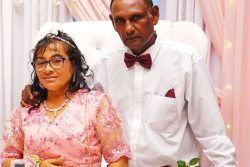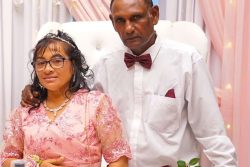Dear Editor,
In every broken society, there exists a group of children often overlooked, ignored, and left to fend for themselves against an array of challenges. These are children working the streets and markets mostly in the day in our society (street connected children). In addition, there are those children living in extreme poverty, victims of exploitation, children from dysfunctional families, dropped out of schools with little guidance and those who reside in remote areas with limited access to basic services and meaningful opportunities for development. It is from these groups that a “new” group of children emerges – children in conflict with the law. Known as society’s forgotten children, they represent a daunting reality that calls for urgent attention and action. In our communities these groups of children and in particular children in conflict with the law face many vulnerabilities and have to live in the margins of our society.
Marginalized youth in Guyana face obstacles that extend far beyond their daily struggle for survival. Many are driven further into the streets by poverty, family breakdowns, and the lack of support from advocates to help with accessing basic services. Others come into conflict with the law at an earlier age and thrust into a justice system that is not yet rehabilitative. Once inside, they face stigma, inadequate support, and a limited chance of reintegration into society.
The societal biases against children in conflict with the law make their marginalization even more profound. Labelled as troublemakers, criminals, or simply “hopeless cases,” they are often denied the opportunities for growth and change that should be afforded to every child. Their circumstances are not a result of inherent failings but rather systemic gaps in communities, social, economic, and legal support structures. When we fail to advocate for these young people, we perpetuate a cycle of poverty, crime, and social disintegration against these children and youth.
ChildLinK and the Childcare and Protection Agency (CPA) have been working together for almost two decades now with very similar goals and objectives. Through our strategic programming we aim to protect children especially those with inadequate parental care, which often results in this group of children experiencing violence, abuse, abandonment, and neglect. Together ChildLinK and several partners have been working on the DRIVE (Diversion Reintegration Interventions Vital for Empowerment – funded by the European Delegation) Project to address the existing gaps in services for children who are at risk or in conflict with the law. More specifically, the initiative focuses on diversion, mentorship, increase parental care and prevention of juvenile delinquency.
At ChildLinK, we are dedicated to advocating for marginalized children and youth, as this effort lies at the heart of care, protection and juvenile justice reform. The new Juvenile Justice Act recognizes that every child, irrespective of their background or past actions, has the right to a fair chance of diversion from a life of crime to a family and community with hopes for a meaningful life where they can make their contributions to society in the future. Isn’t it time to shift our perception of juvenile offenders from being simply criminals to seeing them as children and young people in need of guidance, support, and compassion?
Yours faithfully,
Lucria Rambalak








